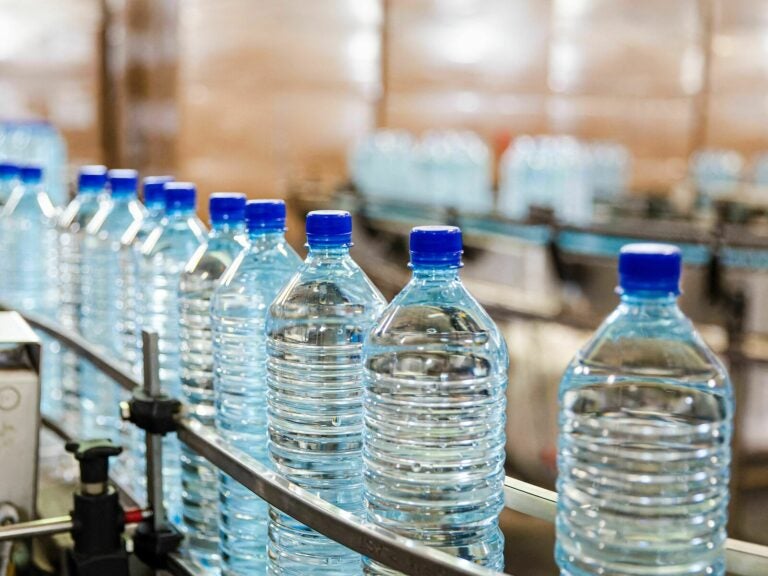Researchers find a massive number of plastic particles in bottled water

Researchers from Columbia University and Rutgers University found roughly 240,000 detectable plastic fragments in a typical liter of bottled water.(Jody Amiet/AFP via Getty Images)
Microscopic pieces of plastic are everywhere. Now, they’ve been found in bottled water in concentrations 10 to 100 times more than previously estimated.
Researchers from Columbia University and Rutgers University found roughly 240,000 detectable plastic fragments in a typical liter of bottled water. The study was published Monday in the Proceedings of the National Academy of Sciences.
About 10% of the detected plastic particles were microplastics, and the other 90% were nanoplastics. Microplastics are between 5 millimeters to 1 micrometer; nanoplastics are particles less than 1 micrometer in size. For context, a human hair is about 70 micrometers thick.
Microplastics have already been found in people’s lungs, their excrement, their blood and in placentas, among other places. A 2018 study found an average of 325 pieces of microplastics in a liter of bottled water.
Nanoplastics could be even more dangerous than microplastics because when inside the human body, “the smaller it goes, the easier for it to be misidentified as the natural component of the cell,” says Wei Min, a professor of chemistry at Columbia University and one of the study’s co-authors.
The researchers used a technology involving two lasers called stimulated Raman scattering (SRS) microscopy to detect the particles and used machine learning to identify them. They searched for seven common types of plastic using this system: polyamide 66, polypropylene, polyethylene, polymethyl methacrylate, polyvinyl chloride, polystyrene and polyethylene terephthalate.
They tested three brands of bottled water; they did not identify the brands.
The particles they could identify accounted for only 10% of total particles they found — the rest could be minerals, or other types of plastics, or something else, says Beizhan Yan, a research professor at the Lamont-Doherty Earth Observatory of Columbia University and a co-author on the study.
The researchers hypothesize that some of the plastics in the bottled water could be shedding from, ironically enough, the plastic used in types of water filters.
Phoebe Stapleton, another study co-author who is a professor of pharmacology and toxicology at Rutgers University, says researchers have known that nanoplastics were in water. “But if you can’t quantify them or can’t make a visual of them, it’s hard to believe that they’re actually there,” she says.
The significance of their group’s research is that it now “brings that to light, and not only provides what is a computer generated image, but it also allows for the quantification and even more importantly, the chemistry of that quantification,” Stapleton says.
They hope the research will lead to having a better understanding of how much plastic humans are regularly putting into their bodies and its effects.
Yan says they plan future research employing the same technology to look at plastic particles in tap water, in the air, in food and in human tissues. “This is basically just to open a new window for us to see [what was] this invisible world before.”
Humans produce more than 440 million tons of plastic each year, according to the United Nations. About 80% of plastic ends up in landfills or the environment, researchers say.
9(MDAzMzI1ODY3MDEyMzkzOTE3NjIxNDg3MQ001))




